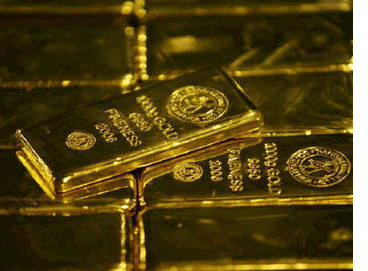TauTona (Great
Lion)
Deepest mine in the world



The mine is one of the three Western Deep Levels
mines of the West Wits gold field west of Johannesburg. The mine is
near the town of Carletonville. TauTona neighbours the Mponeng and
Savuka mines, and TauTona and Savuka share processing facilities.
All three are owned by AngloGold Ashanti. The mine was originally
built by the Anglo American Corporation with its 2 km deep main
shaft being sunk in 1957. The mine began operation in 1962.
It is one of the most efficient mines in South Africa and remains
in continuous operation even during periods when the price of gold
is low. Since its construction two secondary shafts have been added
bringing the mine to its current depth. The mine today has some 800
kilometers of tunnels and employs some 5,600 miners. The mine is a
dangerous place to work and an average of five miners die in
accidents each year. The mine is so deep that temperatures in the
mine can rise to life threatening levels. Air conditioning
equipment is used to cool the mine from 55 °C (131 °F) down to a
more tolerable 28 °C (82.4 °F). The rock face temperature currently
reaches 60 °C (140 °F).
By 2008, the mine reached some 3.9 km underground. This made it the
deepest mine in the world, surpassing the 3,585 m deep East Rand
Mine by a considerable margin. This new shaft extended the depth
from its previous 3.6 km, and will extend the mine's life to
2015.
The journey to the rock face can take 1 hour from surface level.
The lift cage that transports the workers from the surface to the
bottom travels at 16 meters per second (58 km/h).
The mine has also been featured on the MegaStructures program
produced by National Geographic.
In the 2008 financial year, four employees were killed at the
TauTona mine, out of seven fatal accidents that occurred at
AngloGold Ashanti's West Wits operations and 14 fatalities overall
in the year.[3] The safety record of the mine improved in 2009,
when it only recorded one fatality.
Geology and reserves
The TauTona mine exists within the West Witts
area slightly South West of Johannesburg.
Two reef horizons are exploited at the West Wits
operations: the Ventersdorp Contact Reef (VCR), located at the top
of the Central Rand Group, and the Carbon Leader Reef (CLR) near
the base. Owing to nonconformity in the VCR, the separation between
the two reefs increases from east to west, from 400m to 900m.
TauTona and Savuka exploit both reefs while Mponeng only mines the
VCR. The structure is relatively simple with rare instances of
faults greater than 70m.
The CLR consists of one or more conglomerate
units and varies from several centimetres to more than 3m in
thickness. Regionally, the VCR dips at approximately 21°, but may
vary between 5° and 50°, accompanied by changes in thickness of the
conglomerate units. Where the conglomerate has the attitude of the
regional dip, it tends to be thick, well-developed and accompanied
by higher gold accumulations.
Where the attitude departs significantly from the
regional dip, the reef is thin, varying from several centimetres to
more than 3m in thickness.
Total resources 2,615,000 ounces
Measured resources 510,000 ounces
Indicated resources 8,106,000 ounces

Mining and processing
Mining operations are conducted at depths ranging
from 1.8km down to 3.9km following the recent expansion.
The mine consists of a main shaft system supported by secondary and
tertiary shafts. The main mining method is longwall. TauTona shares
a processing plant with Savuka. The plant uses conventional milling
to crush the ore and a CIP (carbon in plant) to further treat the
ore. Once the carbon has been added to the ore, it is transported
to the plant at Mponeng for electro-winning, smelting and the final
recovery of the gold.
Production
Gold production declined by 14% to 12,714kg
(409,000oz) (2006: 14,736kg (474,000oz)), owing to a
higher-than-expected fall in the volumes of ore mined. This was due
to increased seismic activity in the vicinity of the CLR shaft
pillar which is being mined, and at several highgrade production
panels, where production was halted for limited periods during the
course of the year. Both face length and face advance were
negatively affected by seismicity during the year. The increased
geological risk from this seismic activity necessitated re-planning
regarding mine layout and mining methods.

To qualify for the find you
must do some investigating and answer the following
questions.
1. What is the
current depth of the mine and what is it below sea
level?
2. What is the
chemical symbol for gold?
3. What 2 flags are
on top of the Shaft and how high is the shaft? (Aprox)
4. There are 2
different rocktipes between the shaft and the koppie, can you
identify at least one and for what were they used? Drive thru the
village on the left for a clue.
5. Where and how do
you think did the gold ore came from?
6. What did
Biochemist Esta Van Heerden from the University of the Free State,
discovered in the crust in the Tau Tona gold mine in South
Africa?
7. Take a photo of
you and your GPS at one of the entrances to the mine with the
TauTona shaft in the back ground.
